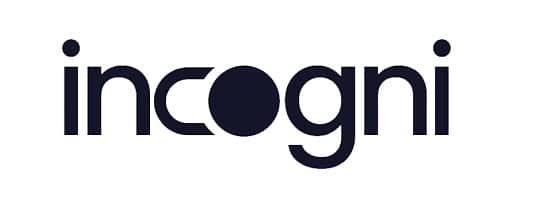You probably already know about the risks that people search sites like Whitepages pose. However, not everyone is aware that companies like CoreLogic make money by selling insights into your life, routine, and spending habits. It allows advertisers to target you based on your address, education history, or credit history. And there’s nothing stopping online trolls or abusive ex-partners from using this info to track you down in the real world.
CoreLogic doesn’t ask for permission before collecting or sharing your data. Worse still, it lacks a streamlined process for opting out. In fact, if you only skim the privacy policy, it’s easy to assume that opting out isn’t actually possible. There’s no need to worry, though.
Below, we’ll explain how to force CoreLogic to delete any information it holds on you once and for all.
Opting out of CoreLogic’s services won’t remove your details from other websites. For maximum protection, you’ll have to either submit takedown requests to every data broker yourself or use a tool to do this for you. Here are our top recommendations:
- Incogni: An inexpensive service from a reputable company. Contacts over 180 brokers automatically and can even submit complaints on your behalf. Available in North America and Europe.
- DeleteMe: Hassle-free data deletion service with live chat-based support. Removes your info from over 700 websites and offers discounted family plans
- PrivacyBee: Costs a little more but can take advantage of location-specific laws to force brokes to delete your data. Only works in the US but has 24/7 customer support.
Our #1 data removal tool: Incogni
Apps Available:
Website: https://www.incogni.com
Incogni was created by Surfshark, the team behind one of our top-rated VPNs. It reaches out to an ever-expanding list of data brokers and asks them to delete your data without you having to lift a finger. Better still, if these requests are ignored or refused, Incogni contacts regulatory bodies automatically. It also checks back regularly to make sure your info hasn’t been reacquired.
Unlike many similar services, Incogni works in multiple countries including the US, Canada, the UK, and most of Europe. It’s extremely easy to use too; once you’ve completed the onboarding process, you can leave it alone and get on with your life.
Due to CoreLogic’s non-standard opt out process, Incogni can’t remove you from this platform automatically. It does force Whitepages, Nuwber and dozens of other sites to delete your data, though. Just follow these steps to get started:
- Start by creating an Incogni account. Monthly plans cost $12.99 USD per month but prices vary depending on your location. No matter where you are, you can save 50 percent by choosing the annual plan.
- Provide Incogni with some basic personal information and give it authorization to act on your behalf
- Incogni will begin sending out takedown requests
- Your dashboard should start showing completed requests within the first few days of signing up. After a month, most of the first wave should be resolved
- Incogni will continue sending requests indefinitely, periodically adding new brokers and revisiting old ones to make ensure that your data never becomes available again
BEST PERSONAL DATA DELETION TOOL:Incogni takes the stress out of protecting your personal information. All plans include a 30-day money-back guarantee, meaning you can try it completely risk-free.
How to opt out of CoreLogic
Most people search sites have a simple opt-out form you can use to manually submit a data-deletion request. CoreLogic complicates the process. Its privacy policy explains that you can opt out of marketing messages by contacting a specific email address. However, you’ll have to scroll down to learn that it’s actually possible to delete your data this way as well.
Here’s how to get CoreLogic to delete your info:
- Open up your preferred email service
- Create a new email and address it to “privacyuk@corelogic.com” if you’re in the UK, or “privacy@corelogic.com” if you’re in the US
- Next, you’ll have to specifically state that you want all information held about you to be deleted, and not shared, sold, or made available again in the future. We’d suggest saying something like:“My name is [Your full name here], born [your date of birth], and residing in [city]. I’m writing to request that you permanently delete any information currently stored about me. I do not consent to having this data shared, sold, or made available to anyone else.“
- CoreLogic may reach out seeking further evidence that you are who you claim to be. Once you do, your data should be removed from the company’s database within 72 hours
If you’re worried about people misusing personal data that was previously available online, we’d recommend trying a identity theft protection service. These keep an eye on your accounts, letting you know about any unauthorized login attempts, suspicious transactions, or credit applications in real time.
Why should I force CoreLogic to delete my data?
You don’t benefit at all from having your data available to CoreLogic customers. Why should someone else make money from your information? After all, organizations like this one usually don’t have adequate safeguards in place to protect data subjects from people who want to do them harm. So long as they’re willing to pay, anyone can learn:
- Your full name and aliases
- Current and previous phone numbers
- Education and employment history
- Your home address, how much the property is worth, and how many people live there
- Lien, bankruptcy, and tax records
- Your child support obligations
- Whether you hold a pilot’s or driver’s license
- Your criminal history and any judgements against you
- Social Security Number
- Business records
Having all of this information out there makes it extremely easy for someone to show up at your home, harass your family members, or steal your identity. Additionally, anyone who signs can freely share this information with strangers (you’ll often hear this referred to as “doxxing”).
CoreLogic: Frequently Asked Questions
How is it legal for CoreLogic to share my information?
Market-insight companies and people search sites tend to work in a similar way. They gather information from publicly-available sources like electoral registers and property records, then make this data (or conclusions drawn from it) accessible for a fee.
Unfortunately, this practice is completely legal. There are laws against using this information to determine a person’s eligibility for employment, scholarships, or government benefits but you’d never know if this occurred.
Additionally, CoreLogic is allowed to share your data with more or less any company it wants. The only way to actually learn who has access to your information is to request disclosure, and this is only an option if you live in California. Even then, CoreLogic only responds to one of your requests per year).
Will CoreLogic re-add my data after I’ve asked them to delete it?
CoreLogic doesn’t actually address this possibility in its privacy policy, though its now-deleted opt out form did refer to this process as “permanent”. Additionally, it mentions that it may share your details with third parties in the event that it’s acquired by another company.
To be on the safe side, we’d suggest checking back in with CoreLogic periodically. Some email providers even allow you to schedule periodic messages, allowing you to request deletion every few months. At the moment, automated data-removal services like Incogni don’t support CoreLogic, but they will prevent most other data brokers from sharing your personal info.
What’s the best way to reduce my digital footprint?
Erasing your digital footprint isn’t as easy as deleting your social media accounts. Even if you’re not logged in, the websites you visit collect lots of information that could be used to identify you, such as your IP address, device specification, and advertising ID.
First, it’s a good idea to limit the number of sites sharing your personal information. You can automatically submit data-removal requests using a service like Incogni. Next, we’d recommend reading up on tracking cookies and installing some of the free privacy-enhancing tools at your disposal. You may also want to consider using a VPN to stop public hotspot owners or your ISP from monitoring your activities.








